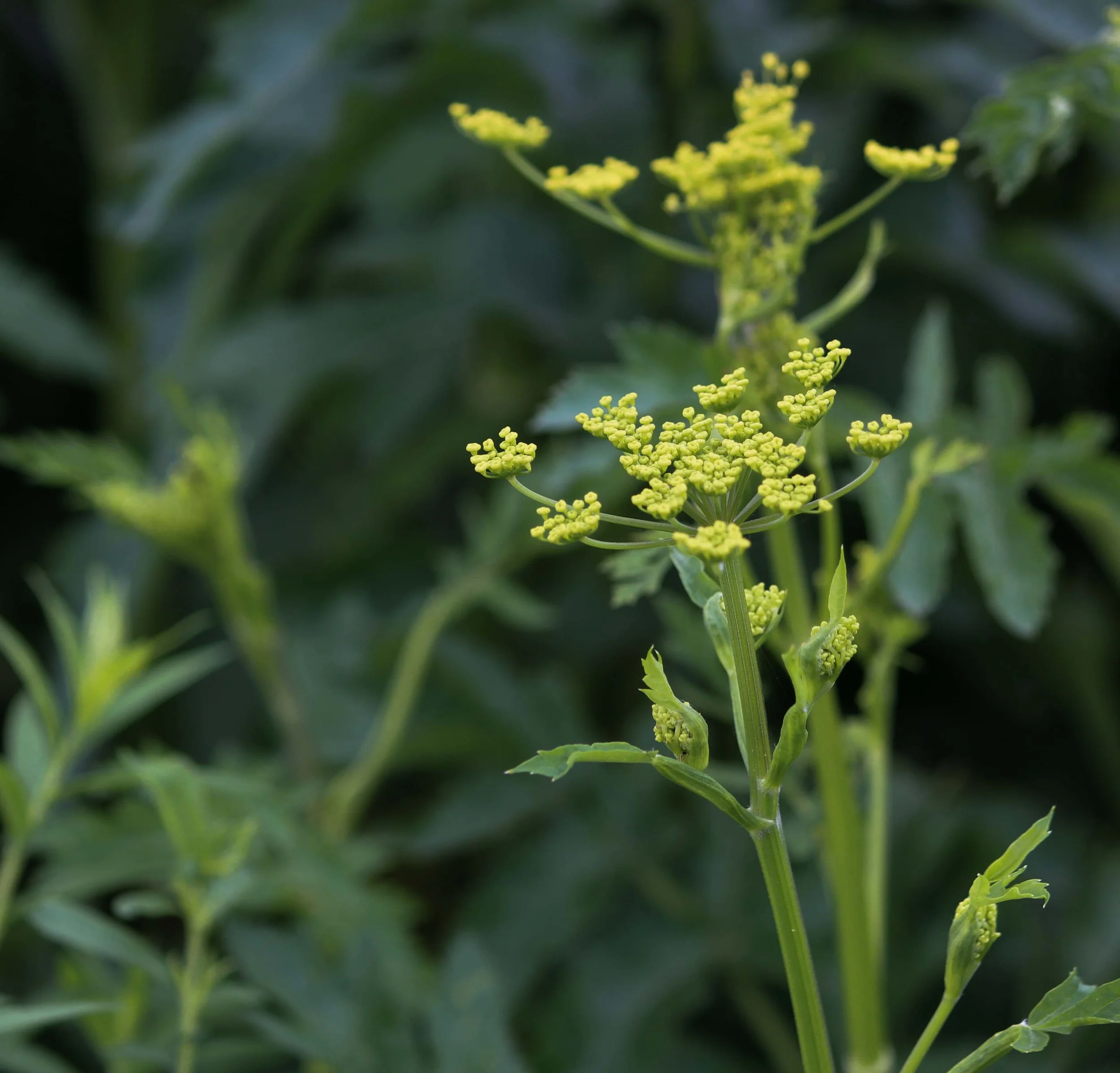Protect yourself when working around wild parsnip
Since 2012, the issue of wild parsnip (also known as poison parsnip) has turned into a growing concern - particularly for residents in Rideau-Goulbourn - as the weed continues to spread its way across rural Ottawa and enter into suburban areas with increasing speed.
As the City of Ottawa takes steps to deal with wild parsnip on roadsides, in parks and other city properties, we will post news and updates to keep residents informed of any significant measures being taken.

Why it's important to be cautious and use protective measures
It may seem pretty, but stay well away from this "flower". Wild parsnip is a member of the same family of plants (carrot/parsley) as Giant Hogweed and can cause similar injuries. Getting oil on you from any part of the plant - or coming into contact with its sap/oil from a secondary source - can lead to phytophotodermatitis and even blindness if the oil gets in your eyes when paired with exposure to sunlight or other UV radiation (e.g., tanning booth). The sap of the plant is unsafe, regardless of its stage in the lifecycle.
Sun exposure causes a reaction with the plant's oil, which contains furanocoumarins, that can cause mild to moderate reddening of the skin with burning sensation. More severe cases can even lead to extreme burning and third degree blistering of the skin. Sensitivity to sun exposure on affected areas is long-term, lasting up to 3 years or more.
Phytophotodermatitis symptoms may include red skin, blisters, ulceration of the skin, inflammation, irritation, deformities, increased pigmentation, as well as photosensitization of the skin and eyes that make contact. The reaction is non-allergic - it is a chemical reaction, so no one is immune to the effect. Sensitivity to sunlight can last several years.
How to avoid getting burned by poison parsnip
The best way to avoid injury from wild parsnip is to stay well away from it. Avoid any and all contact with it, particularly in sunlight. However, if you need to work near it, or plan to try and remove it, here are precautions you should take:
- Dress in long sleeves, long pants and wear gloves and goggles. Any exposed skin is vulnerable to getting oil on it, and when in sunlight the reaction happens quickly.
- If your clothes come into contact with poison parsnip, remove them immediately after completing your work and wash them. Use care so that you don't rub the plant oil onto yourself or other objects.
- Keep all animals, particularly family pets, away from the plant. If they come into contact, do not touch or pet them before thoroughly washing the plant's sap off of them. Ingestion is also dangerous to animals in varying degrees - ensure pets and livestock do not eat wild parsnip plants.
- Do not use a whipper snipper to get rid of wild parsnip. The sap builds up on the machine as you use it, causing the sap to spray over everything nearby. Several reports of residents getting burns this way have come into our office.
Please note: Animals can be burned by the combination of the oil and sunlight - in particular if they have little to no fur/hair.
If you get wild parsnip sap on your skin:
- Cover the area so that it isn't exposed to the sun.
- Wash the affected area immediately and thoroughly.
- If the area is burning, a cool cloth can be used for relief.
- Treat blisters as you would minor burn blisters - avoid puncture and keep clean, dry.
- See a doctor for more severe burning and blisters.
- For eye contact, thoroughly rinse your eyes and get to an ER immediately.
Wild parsnip burns can take a few days to heal or several months for more severe cases. The sensitivity to sunlight of the affected area can last for several years after coming into contact with wild parsnip sap. Some doctors mistake the burns from this plant for poison ivy. Please share this information with your friends, family and neighbors so more people will know what it is and how to avoid it.
In addition to the skin sensitivities in humans, it is important to keep animals away from wild parsnip plants, particularly animals that are interested in eating it. Ingestion can cause illness and even death depending on how much is ingested and the sensitivity of the animal to the plant.



